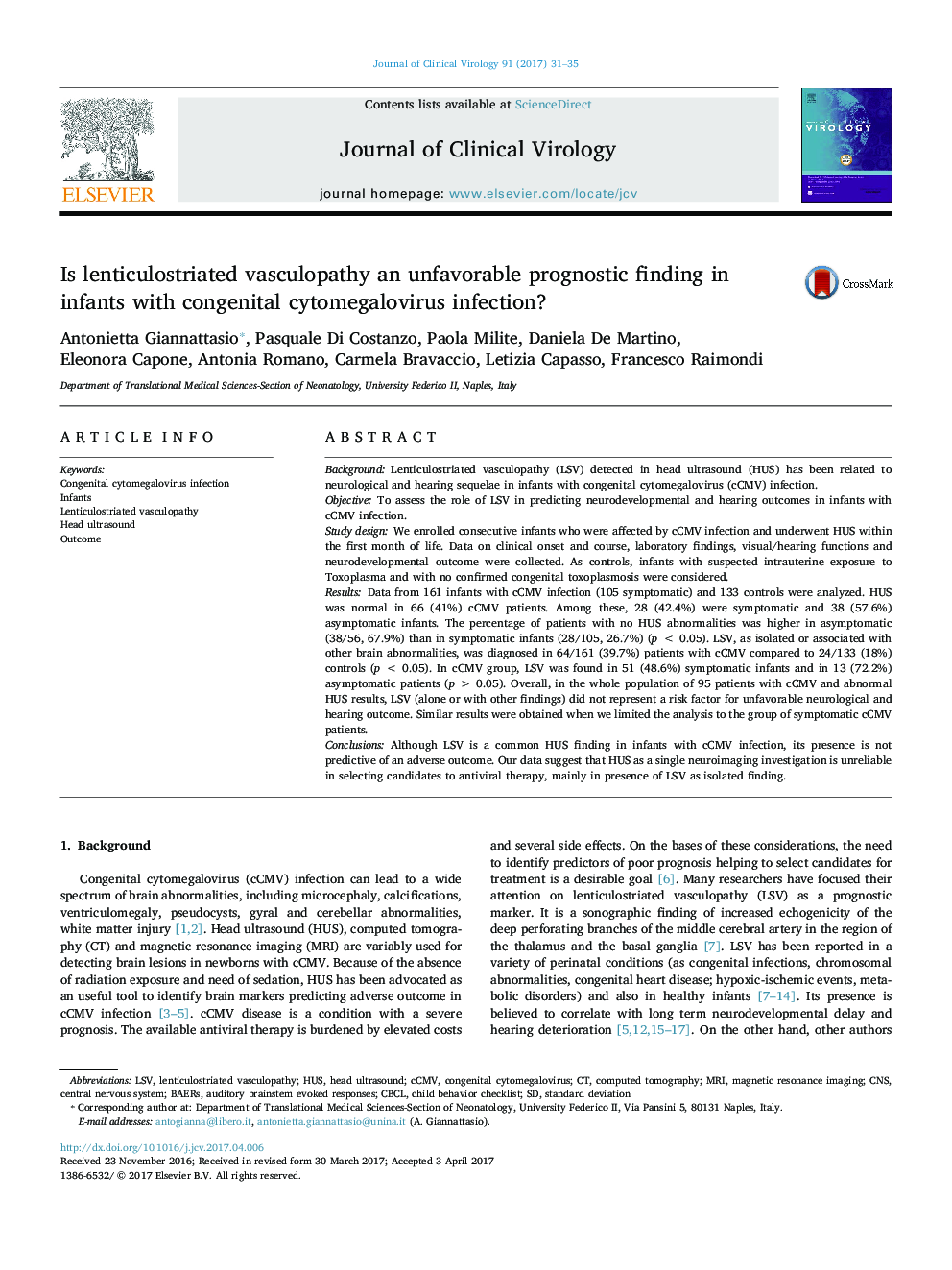| Article ID | Journal | Published Year | Pages | File Type |
|---|---|---|---|---|
| 5668071 | Journal of Clinical Virology | 2017 | 5 Pages |
â¢Lenticulostriated vasculopathy is a brain marker of congenital cytomegalovirus infection.â¢It is a frequent ultrasonographic finding, both in symptomatic than in asymptomatic infants.â¢Its presence does not correlate with unfavorable neurological or hearing outcomes.
BackgroundLenticulostriated vasculopathy (LSV) detected in head ultrasound (HUS) has been related to neurological and hearing sequelae in infants with congenital cytomegalovirus (cCMV) infection.ObjectiveTo assess the role of LSV in predicting neurodevelopmental and hearing outcomes in infants with cCMV infection.Study designWe enrolled consecutive infants who were affected by cCMV infection and underwent HUS within the first month of life. Data on clinical onset and course, laboratory findings, visual/hearing functions and neurodevelopmental outcome were collected. As controls, infants with suspected intrauterine exposure to Toxoplasma and with no confirmed congenital toxoplasmosis were considered.ResultsData from 161 infants with cCMV infection (105 symptomatic) and 133 controls were analyzed. HUS was normal in 66 (41%) cCMV patients. Among these, 28 (42.4%) were symptomatic and 38 (57.6%) asymptomatic infants. The percentage of patients with no HUS abnormalities was higher in asymptomatic (38/56, 67.9%) than in symptomatic infants (28/105, 26.7%) (p < 0.05). LSV, as isolated or associated with other brain abnormalities, was diagnosed in 64/161 (39.7%) patients with cCMV compared to 24/133 (18%) controls (p < 0.05). In cCMV group, LSV was found in 51 (48.6%) symptomatic infants and in 13 (72.2%) asymptomatic patients (p > 0.05). Overall, in the whole population of 95 patients with cCMV and abnormal HUS results, LSV (alone or with other findings) did not represent a risk factor for unfavorable neurological and hearing outcome. Similar results were obtained when we limited the analysis to the group of symptomatic cCMV patients.ConclusionsAlthough LSV is a common HUS finding in infants with cCMV infection, its presence is not predictive of an adverse outcome. Our data suggest that HUS as a single neuroimaging investigation is unreliable in selecting candidates to antiviral therapy, mainly in presence of LSV as isolated finding.
